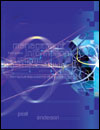1. What are primary threats to information processed by computers? 2. How do viruses spread over the Internet? How do you stop them? 3. What methods are available to identify computer users? 4. What are access controls and how are they used to protect information? 5. What threat are audits trying to protect against? 6. What are the advantages and disadvantages of dual-key encryption compared to singlekey encryption? 7. How can dual-key encryption be used to authenticate a message? 8. Why are certificate authorities so important in a public key infrastructure? 9. Why are wireless transmissions more of a security problem than wired systems? 10. What is a denial of service attack? Why is it so important in e-commerce? Why is it so difficult to prevent? 11. What is a firewall and how does it protect a company from Internet attacks? 12. What capabilities do government agencies have to deal with crime and terrorism using electronic transmissions? 13. On the Web, what are cookies? Why are they necessary? How have some companies abused them?
14. What are the societal tradeoffs between privacy and anonymity? | 



 2003 McGraw-Hill Higher Education
2003 McGraw-Hill Higher Education